When the weather turns bad, its understandable that many of us turn to indoor cycling. Even though you may be in the comfort of your own home or gym, nutrition still plays an important role in helping you get the most of your training session or e-race!
In this article we cover it all, and give you the knowledge 'Ride on!' or 'Power up!'
Gone are the days of jumping on the turbo for a 30 minute leg opener, now with training platforms like Zwift and The Sufferfest, we’re not even blinking an eye at tapping away for 1-2 static hours. But just because you’re indoors doesn’t mean your energy systems change and fuel and hydration are no longer needed. In fact these session are usually super intense making nutritional support even more important, especially if you’re doing back to back sessions.
Here’s our total guide to nutrition for indoor cycling.
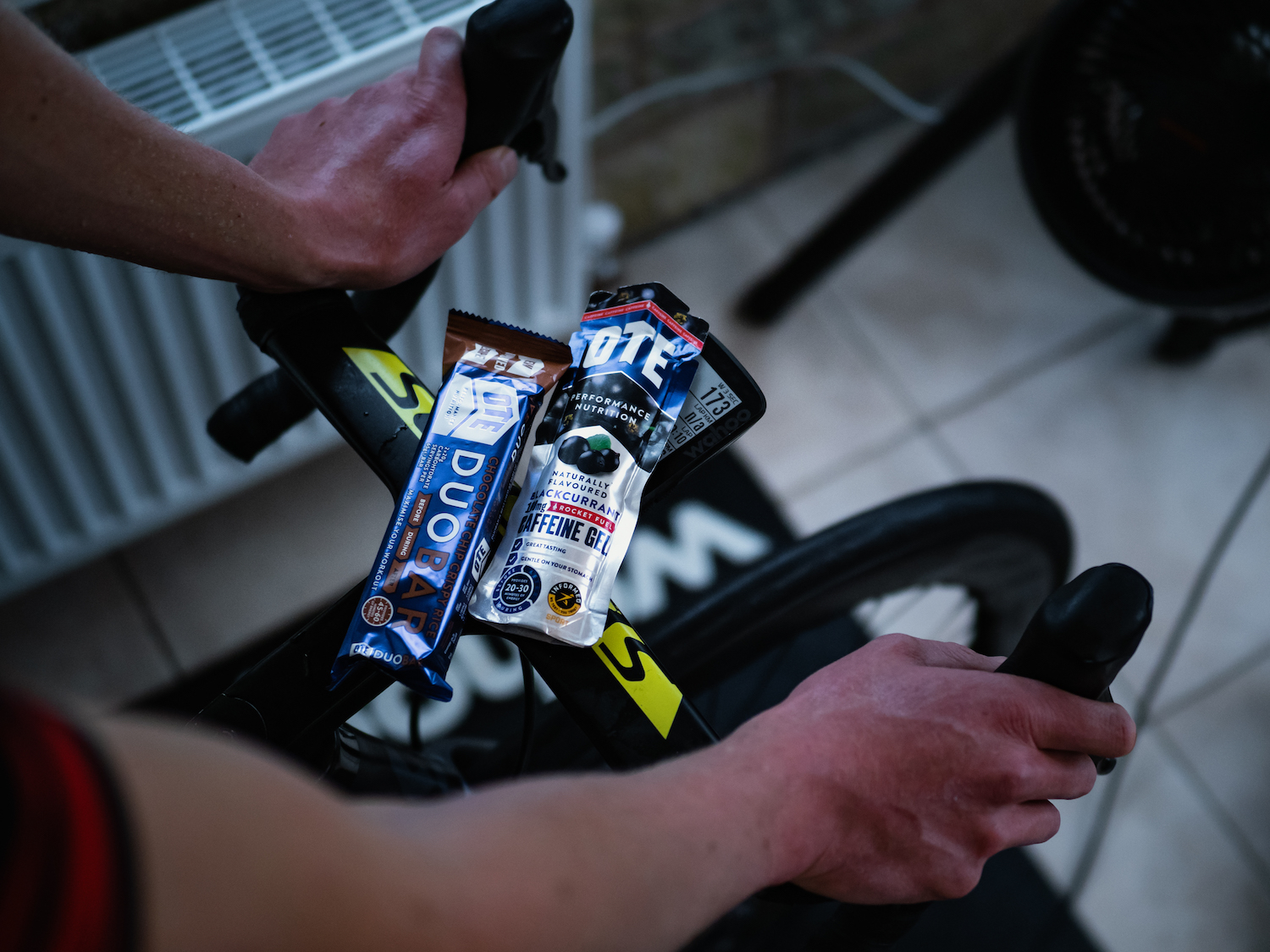
Lets Talk Fuelling
Now yes the consequences are a lot less severe if you ‘blow up’ or ‘hit the wall’ during indoor cycling. There will be no soul destroying grovel home but instead a quick roll onto a nearby sofa. But it’s not about that, it’s about getting the most out of the training session or getting the best result if it’s an e-race. Don’t neglect the habits you have when riding out on the road.
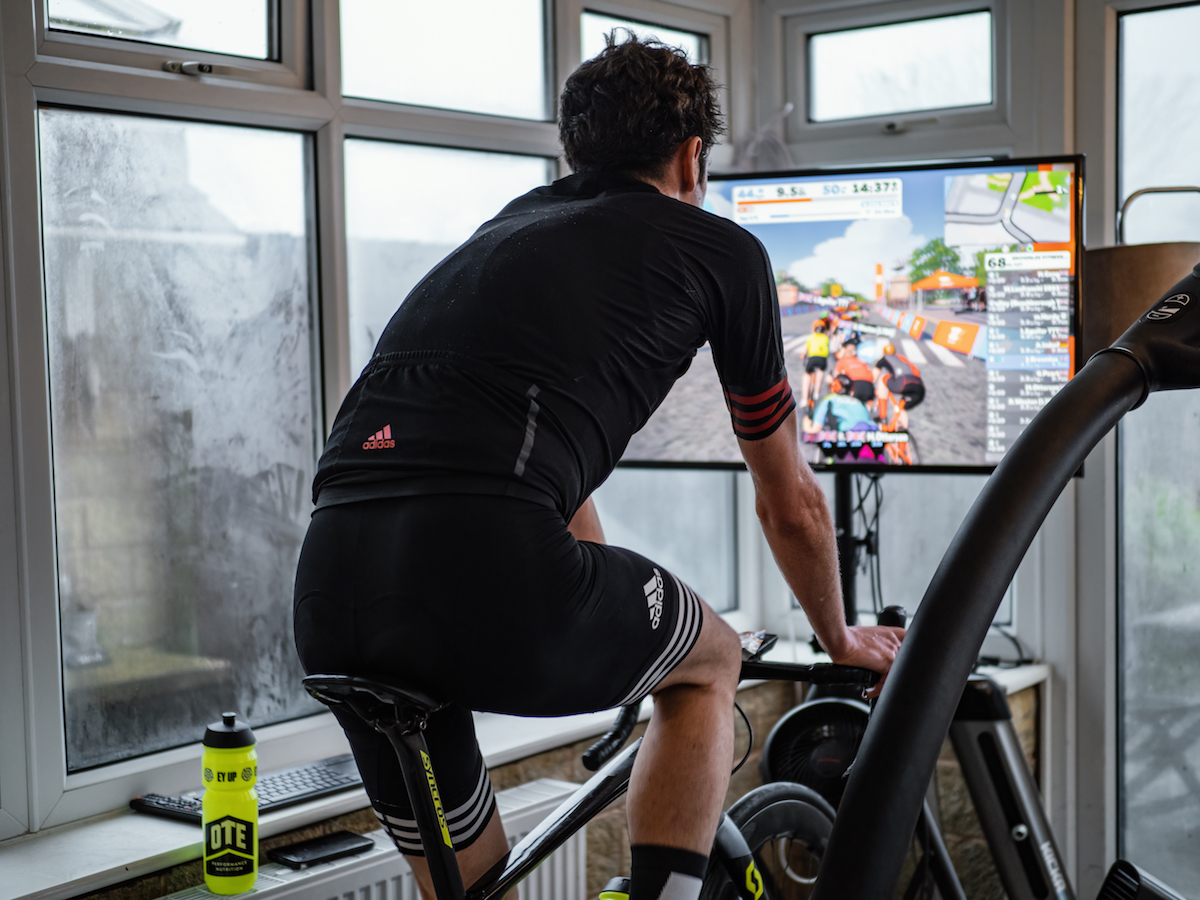
Sessions Shorter than 90 minutes
For anything under an hour and a half then the fuelling emphasis needs to be on a pre-session snack or meal. Because of the high intensity of most indoor sessions the predominant fuel source used will be carbohydrates, but we need to make sure we have stores there to use. If you can’t eat a meal way in advance of your session then keep it light and consume something about an hour before. We recommend:
This should set you up for a shorter session. Once you’re pedalling, remember to stay on top of hydration (which we will discuss below), but also have a fuelling back up at arm’s reach if you fear your performance is about to fade. An emergency energy gel or bottle of energy drink will work a treat. Sometimes you just can’t anticipate how you’re going to feel, whether an e-race is going to be particularly intense or whether your back to back days of training are going to take their toll; so always be prepared with an energy boost!
Remember: The harder the session the quicker your carbohydrates stores run out.
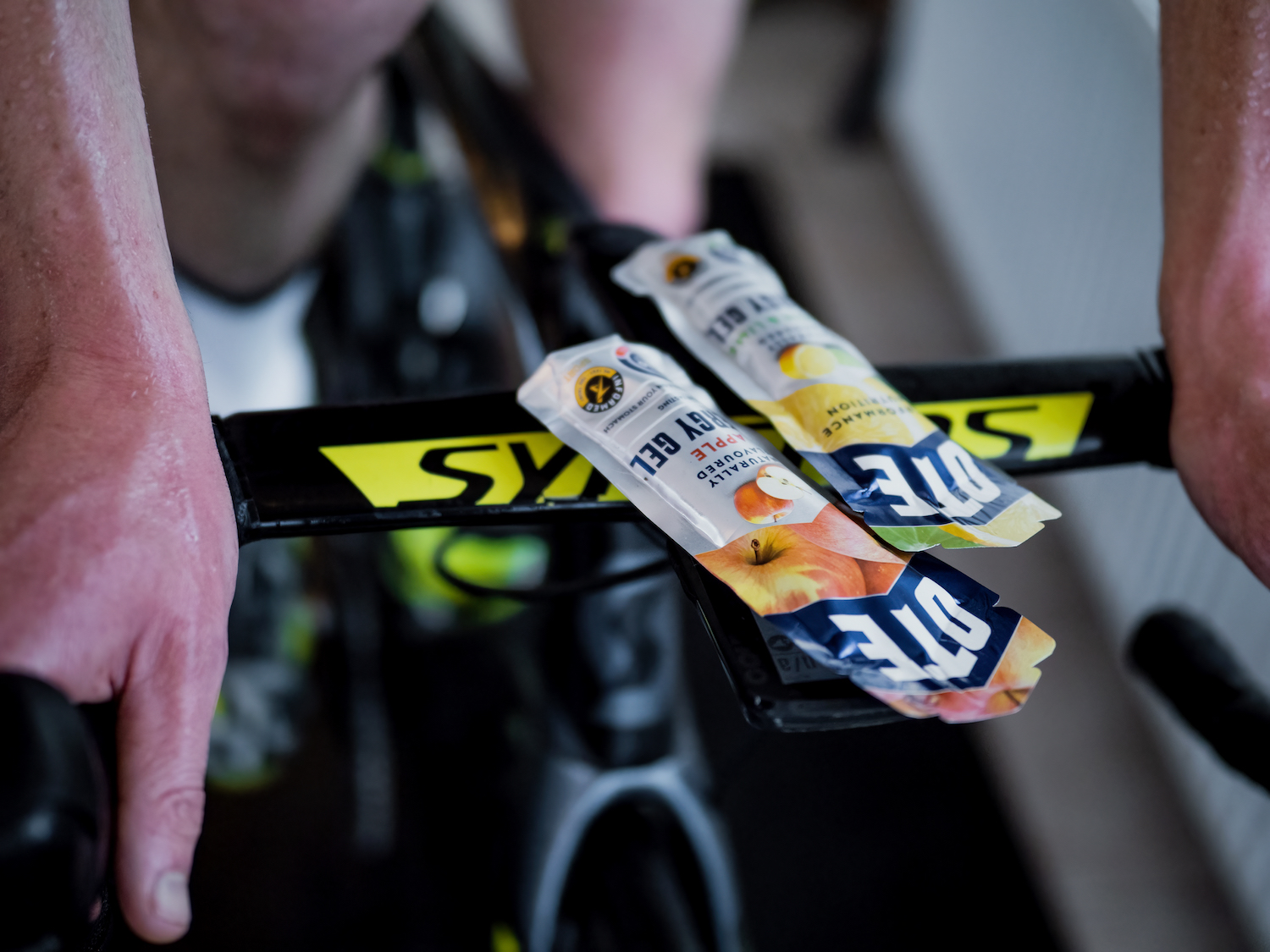
Sessions Longer Than 90 Minutes
Going long on the turbo? Then fuelling needs to be as much a consideration as out on the road. If you’ve eaten correctly beforehand our bodies should have enough energy stores to fuel approximately 90 minutes of moderate to intense exercise, but after this, if we want to keep up the intensity, we need to think about refuelling.
Now the luxury of being static is you don’t have to contend with thick gloves or layer of kit, and can get everything you need in arms length. How you choose to fuel is up to you, and certainly down to personal preference, but if you want to keep up with the pace we advise consuming 40- 60g of carbs per hour. This could look like:
Don’t wait until you start to feel tired to start the fuelling when indoor cycling, start from early on in the session to be able to maintain the quality at the end.
Now let's talk Hydration
When exercising the body’s heat production is 15-20 times greater than at rest. This can be elevated even further by conditions faced when training indoors, which lets face it, are often hot, humid and very sweaty. This is because there is little air movement causing heat to build up around the body meaning sweat can’t evaporate as quickly. This is why you get more hot and sweaty then you would get training outside, making you far more susceptible to dehydration.
Our body’s core temperature is ≈37°C and it is the thermoregulatory systems job to maintain this homeostasis. As the body’s core temperature rises due to exercise, the majority of the heat being dissipated is by the evaporation of sweat. Blood flow has to split itself between our organs, working muscles and now our skin for sweating. As the intensity of exercise increases, sweat rates will increase which actually reduces our blood volume and stroke volume. The heart then has to work much harder to deliver oxygen to working muscles and therefore lowers intensity of exercise we can maintain.
Not only do we lose fluid through sweating but also electrolytes. The primary electrolytes present in sweat during exercise are sodium and chloride with smaller amounts of magnesium, potassium and calcium also present. It is when this electrolyte equilibrium is not maintained during exercise, often through erroneous feeding strategies, that performance is further compromised.
Basically: Dehydration negatively affects performance. Even as little as 2% loss of body weight due to dehydration has been shown to impair performance
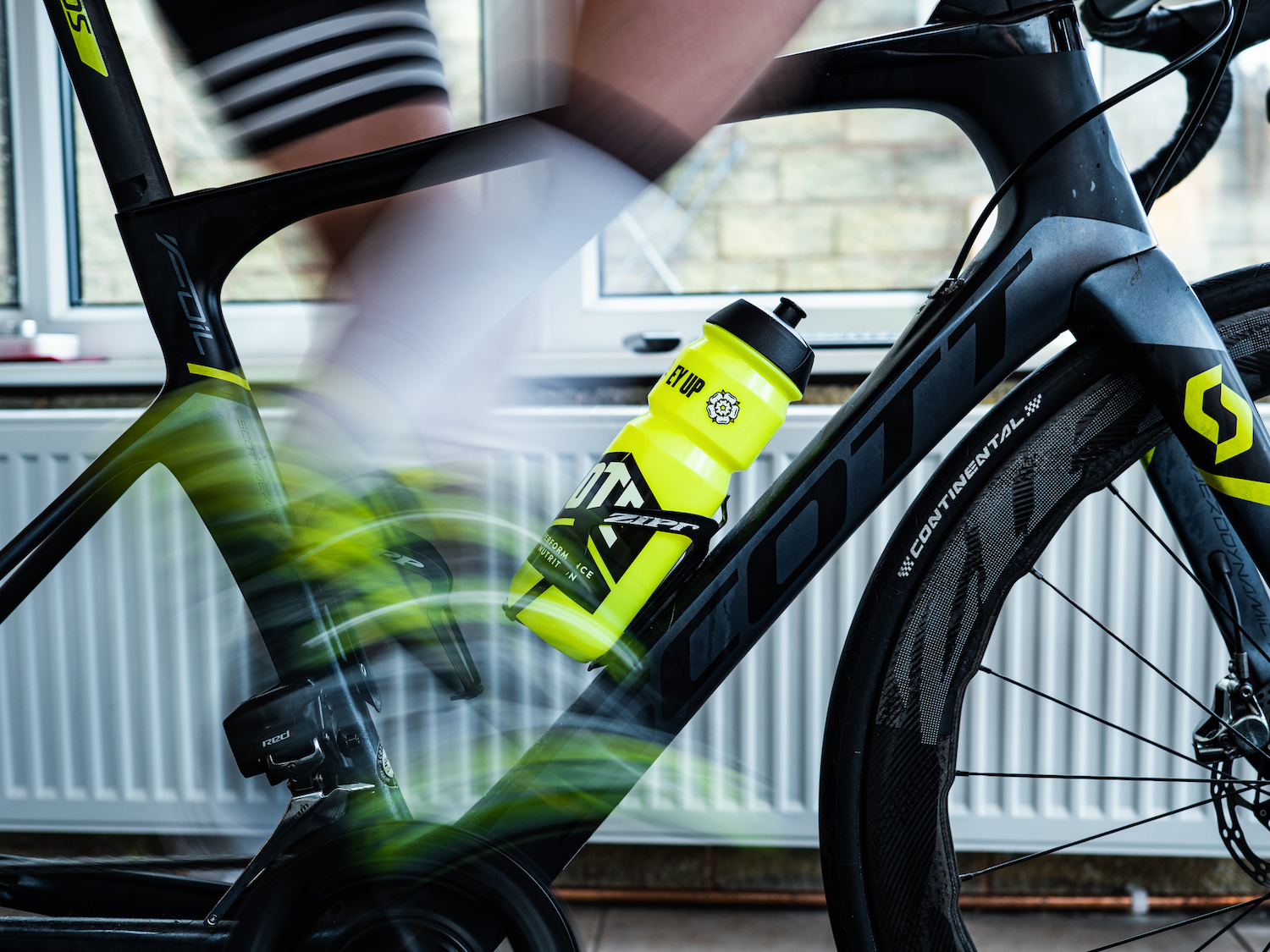
Find Out How Much You Sweat
Before Exercise: It is always a good idea to try to start every session fully hydrated. It can take around 8-12 hours of normal food and drink consumption to fully hydrate again post exercise so take this into account if training twice in a day. If you do not have this long in between sessions then fluid intake may need to be elevated above normal levels in order to rehydrate. The best method is to slowly sip an electrolyte beverage like an OTE Hydro Tab. A top tip is to keep checking your urine colour as a measure of hydration status as everyone is different; aim for a light straw colour.
During Exercise: Due to huge variation in individual sweat rates and indoor training conditions it is impossible to give an exact amount of fluid that should be consumed during a session. Differences in individual sweat rates can range from 0.4L to 1.8L per hour. The best idea is to develop your own individual hydration strategy specific to your own sweat rates.
One simple method is to weigh yourself before and after a training session. To keep it simple, a one hour session can give you a good idea of your sweat rate during an indoor cycling session.
Follow these simple instructions:
• Weigh yourself naked immediately before exercise.
• Train for one hour and monitor how much fluid you take on board.
• Weigh yourself again naked immediately after exercise.
• After exercise the calculated change in body weight will give you an indication of fluid loss.
For Example:
Ambient temperature: 25°C
Pre-exercise weight: 70 Kg
Post exercise weight: 69.5 Kg
Fluid volume consumed during exercise: 500ml
This indicates your sweat rate would be 1ltr/hour (70Kg-69.5Kg = 500g + 500ml = 1)
Under these conditions you can plan a hydration and fuelling strategy based on drinking 1ltr/hour.
Thirst can also be a good way to dictate when to drink. As a rule of thumb it is always good practise to stay just ahead of that feeling of thirst. Consuming electrolyte drinks, such as OTE Hydro Tabs, will aid the absorption of fluid and also promote the feeling of thirst and further drinking. This is more beneficial than consuming just plain water. Hydro Tabs don’t contain any energy so if you’re doing a longer or more intense session then either have some food too or swap the tabs for OTE Energy Drink. Our Energy Drink contains both electrolytes and carbohydrates; perfect for a savage e-race!
Remember, any weight lost directly after exercise is sadly not miracle weigh loss but water loss. Text book would say replenish this with 1.5 times the amount lost (1kg lost= 1 litre lost) as soon as possible. Sipping little and often is better to help our bodies retain the water and stop us running to the toilet at every opportunity.
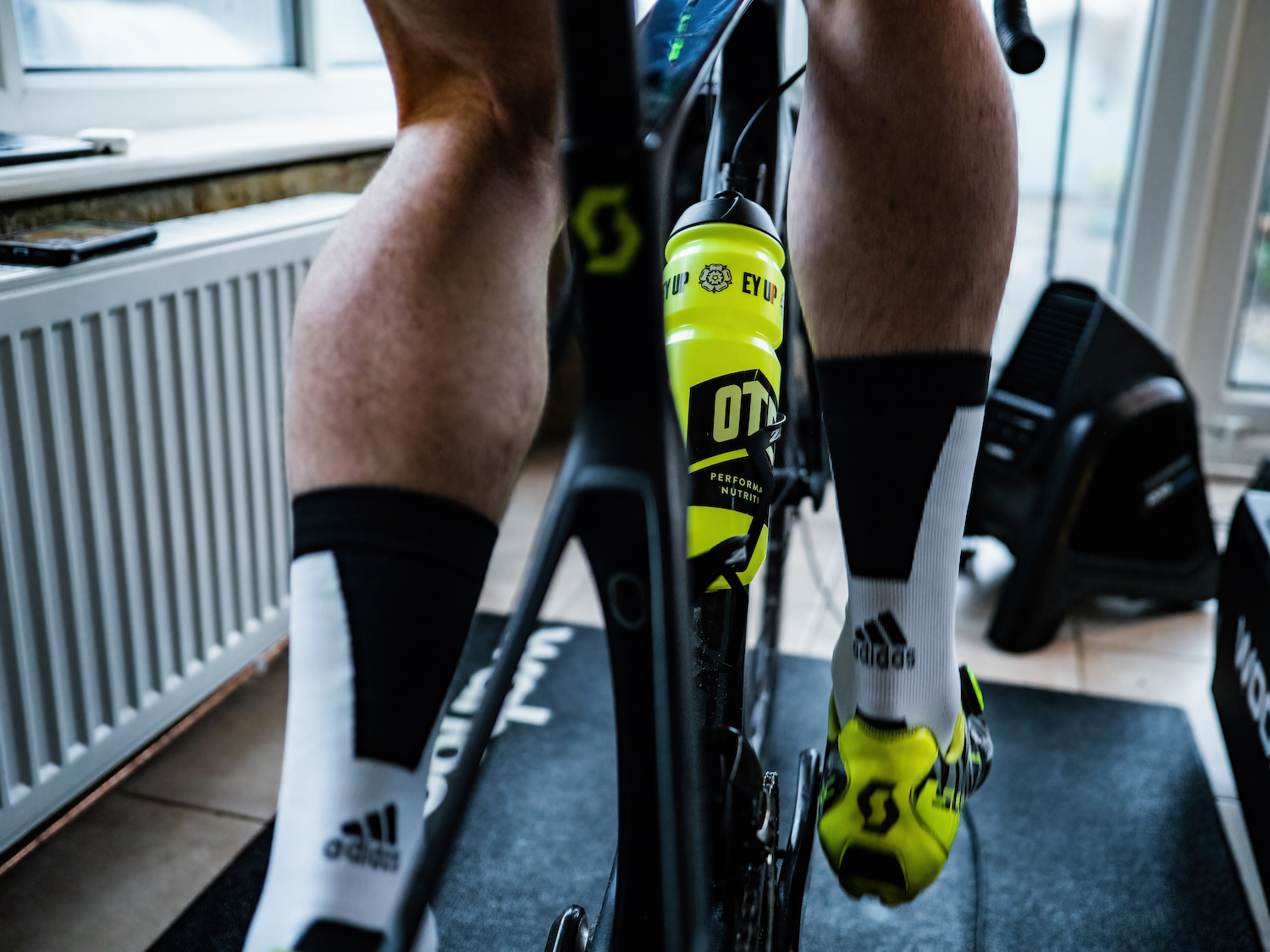
So there you have it, nutrition for indoor cycling explained. Hopefully you can keep on top of those intervals, up that FTP or get stuck into some e-racing whilst times outside are tough.
Also why not check out Donny Chain Gang! A brilliant Zwift community that meet every Tuesday and Thursday evening through winter to smash out some kms!